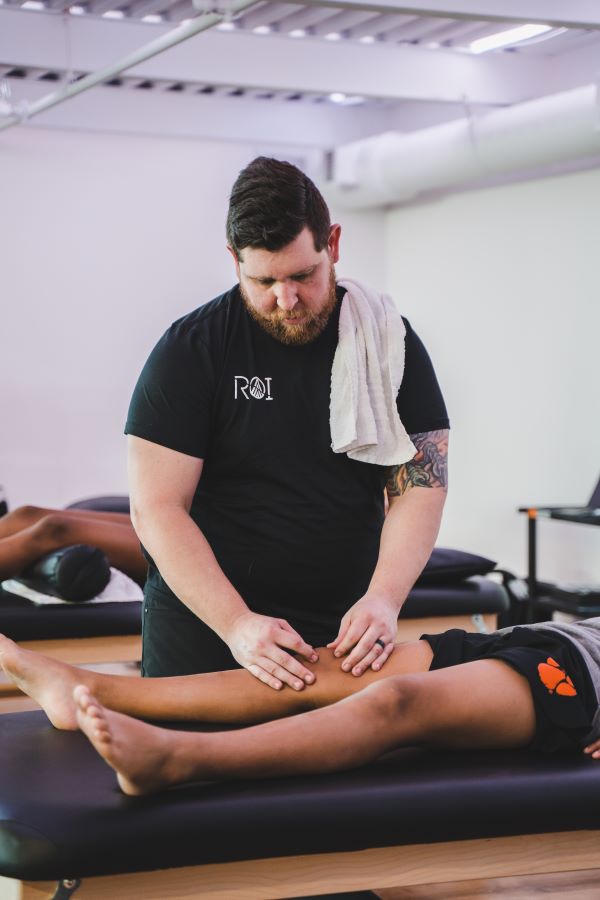Athletes push their bodies to compete, and sometimes pushing hard in a sport can result in an injury. There are a variety of injuries that athletes might experience. Athletes can sometimes face sprains, fractures, dislocations, strains or concussions. On occasion, an athlete might suffer from inflammation and tendonitis, shin splints, tennis elbow, or knee issues. Luckily, there is hope for healing. Facilities like ROI offer return-to-sport rehabilitation and injury risk reduction programs for athletes and teams. Read on to learn more about what should be included in an injury assessment:
Consider the movement system: The movement system is the collection of systems in the human body—cardiovascular, pulmonary, endocrine, integumentary, nervous, and musculoskeletal. All of these systems interact to help the body move. The movement system is a foundation for treating and training athletes. Helping every athlete to move more efficiently in sports and in everyday life should be the goal of any professional trainer. Customizing athlete’s rehab and exercise programs with the movement system in mind is key to achieving top physical performance.
Evaluation is essential: Before a tailored training and treatment program is prescribed, an athlete should undergo a thorough evaluation. This will help to ensure a safe and efficient transition back to participating in sports. An injury assessment should evaluate many different components to establish the nature or severity of the injury.
Injury assessments should be comprehensive: An evaluation of an injury should consider how and when the issue occurred as well as any other contributing factors. A thorough description of symptoms should be shared as well. An observation of the injury ought to examine the athlete for any swelling, bruising, tenderness, abrasions or other abnormalities. Checking the athlete’s range of motion can help to focus on any pain or limitations experienced. Testing the strength of the injured area can help to assess areas of weakness or loss of function.
Additional testing might be required: Depending on the athlete’s injury, there might be a need for a further professional diagnosis, such as through an MRI or an x-ray. If numbness or tingling is present, a neurovascular assessment can check for signs of nerve or blood vessel damage. Be sure to seek help from a physician if an injury is more serious and requires a medical doctor’s care.
Once a physical assessment is complete, an effective treatment plan is in order: After an athlete has an official diagnosis, it is key to develop a personalized treatment plan for recovery. Some components of treatment might include simple tasks like rest, ice, compression, and elevation. However, once an athlete is ready, working with a sports therapy program can be truly beneficial.
Make sports therapy a priority: Sports therapy is not your average physical therapy. It can help athletes who are dealing with acute or chronic injuries, and it can aid athletes in returning to their sport safely and quickly. This special kind of therapy can also help with preventing future injuries, minimizing aggravation of current injuries, and enhancing performance after injury and recovery.
Sports therapy techniques are targeted: Some techniques in sports therapy might include manual, hands-on massage, functional retraining, dynamic strength training, endurance training, taping, icing, heating, and even electrical stimulation. These treatments and modalities are specifically designed to benefit athletes and teams.
Work with a great team: You don’t need to face recovery after an injury on your own. At ROI, athletes in all sports are encouraged to achieve their goals no matter what their injury status may be. An integrated approach with doctors of physical therapy, exercise physiologists, strength and conditioning coaches, and registered dieticians gives a holistic approach to healing the whole athlete. Whether you’re dealing with an acute injury, a chronic issue, or checking on an old injury, an experienced staff is ready to help with the specialized techniques of sports therapy, special equipment, and state of the art facilities on the road to achieving great results.
Begin your recovery journey: Book a physical therapy evaluation so that you can be assessed by a sports therapy professional at ROI. An injury assessment is key to beginning your healing process. One-on-one sports therapy sessions can lead to the prescription of evidence-informed treatment.
Reach out to ROI: It’s so important for athletes to be intentional with their recovery process. ROI can help with providing tailored care for athletes of all levels who are recovering from injury. Book an appointment with ROI, or reach out to learn more.

